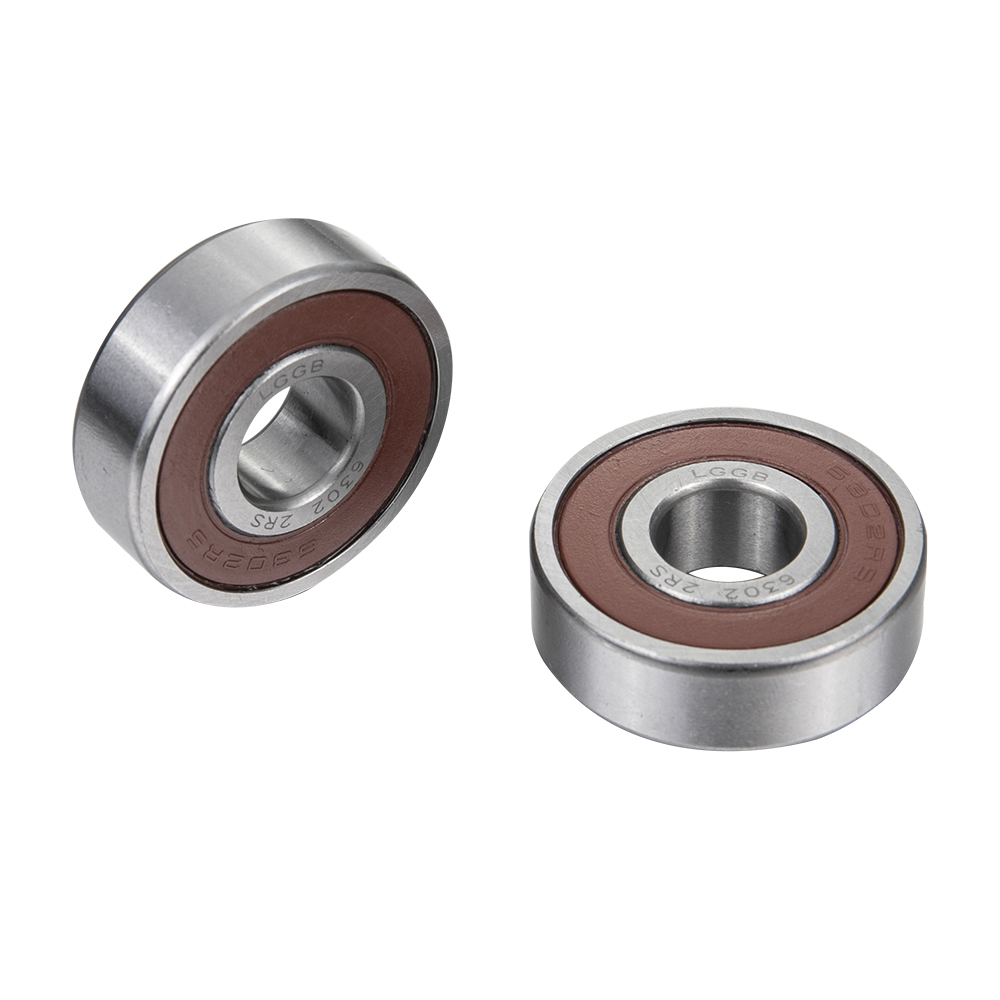Li-bearings ke karolo ea bohlokoa ea mechine ea sejoale-joale. Mosebetsi oa eona o ka sehloohong ke ho ts'ehetsa 'mele o potolohang oa mochini, ho fokotsa coefficient ea likhohlano nakong ea ho sisinyeha ha eona, le ho netefatsa ho nepahala ha eona ho potoloha.
Ho ea ka mefuta e fapaneng ea likhohlano ea lintho tse tsamaeang, li-bearings li ka aroloa ka mekhahlelo e 'meli: li-bearings tse thellang le li-bearings tse thellang.
Hangata ho sebelisoa li-rolling bearings ke li-bearings tsa li-groove tse tebileng, li-cylindrical roller bearings le li-thrust ball bearings. Har'a tsona, li-bearings tse pota-potileng li hlophisitsoe hantle 'me li arotsoe,' me ka kakaretso li entsoe ka likarolo tse 'nè: selikalikoe sa ka ntle, lesale la ka hare,' mele o pota-potileng le cage.
Deep groove ball bearingshaholo-holo e jara mojaro oa radial, hape e ka jara mojaro oa radial le axial load ka nako e le 'ngoe. Ha e le tlas'a khatello ea radial feela, angle ea ho kopana ke zero. Ha "deep groove ball" e nang le "radial clearance" e na le ts'ebetso ea "angular contact" mme e ka jara mojaro o moholo oa axial. The friction coefficient ea deep groove ball bearing e nyane haholo mme lebelo la moeli le lona le phahame.
Deep groove ball bearings ke tsona tse emelang ka ho fetisisa li-rolling bearings 'me li sebelisoa haholo. E loketse ts'ebetso e phahameng esita le e phahameng haholo, 'me e tšoarella haholo ntle le tlhokomelo khafetsa. Mofuta ona oa ho jara o na le coefficient e nyane ea likhohlano, lebelo le phahameng la moeli, sebopeho se bonolo, litšenyehelo tse tlase tsa tlhahiso le ho le bonolo ho fihlela ho nepahala ha tlhahiso e phahameng. Mefuta ea boholo le sebopeho lia fapana, 'me li sebelisoa ho lisebelisoa tse nepahetseng, lienjineri tse lerata le tlase, likoloi, lithuthuthu le mechini e akaretsang le liindasteri tse ling,' me ke mefuta e sebelisoang haholo ea li-bearings indastering ea mechini. Haholo-holo jara mojaro oa radial, empa hape o jara boima bo itseng ba axial.
Li-cylindrical roller bearings, likarolo tsa rolling ke li-radial rolling bearings tsa cylindrical rollers. Lirolara tsa cylindrical le raceways ke li-linear contact bearings. Bophahamo ba moroalo, haholo-holo bea radial load. Khohlano pakeng tsa ntho e bilikang le lekhopo la reng e nyane, e loketseng ho potoloha ka lebelo le phahameng. Ho latela hore na reng e na le likhopo kapa che, e ka aroloa ka li-bearings tsa mela e le 'ngoe e kang NU, NJ, NUP, N, NF, le li-bearings tse peli tse kang NNU le NN.
Li-cylindrical roller bearings ntle le likhopo ka lesale la ka hare kapa la ka ntle, mehele e ka hare le e ka ntle e ka tsamaea e amanang le tataiso ea axial, kahoo e ka sebelisoa e le li-bearings tse sa lefelloeng. Li-cylindrical roller bearings tse nang le likhopo tse peli ka lehlakoreng le leng la lesale la ka hare le lesale la ka ntle le lehare le le leng ka lehlakoreng le leng la lesale le ka mamella tekanyo e itseng ea mojaro oa axial ka tsela e le 'ngoe. Ka kakaretso, ho sebelisoa lesaka la tšepe, kapa ho sebelisoa motsoako oa koporo o fetolang lesaka le tiileng. Leha ho le joalo, ho boetse ho na le karolo ea tšebeliso ea polyamide e etsang lesaka.
Li-bearings tsa thrust ball li etselitsoe ho mamella meroalo e matla nakong ea ts'ebetso ea lebelo le holimo, 'me li na le lithapo tse kang li-washer tse nang le li-grooves tsa mabelo bakeng sa ho bilika ha bolo. Kaha ferrule e ka sebopeho sa mosamo oa setulo, bolo ea maoto e arotsoe ka mefuta e 'meli: mofuta oa mosamo oa setulo se bataletseng le mofuta oa setulo sa cushion se ikemetseng. Ho feta moo, ho jara hona ho ka mamella meroalo ea axial, empa eseng meroalo ea radial.
Li-ball bearingsli entsoe ka likarolo tse tharo: washer ea setulo, washer ea shaft le kopano ea tšepe ea tšepe. Washer ea shaft e tsamaellana le shaft le reng ea setulo e tsamaellanang le ntlo. Li-thrust ball bearings li loketse feela likarolo tse jereng mojaro oa axial ka lehlakoreng le le leng 'me li na le lebelo le tlase, joalo ka lihakisi tsa crane, lipompo tsa metsi tse otlolohileng, li-centrifuges tse otlolohileng, li-jack, li-reducers tse lebelo le tlase, joalo-joalo. li-bearings li arotsoe 'me li ka kopanngoa le ho aroloa ka thoko.
Nako ea poso: Mar-07-2022


